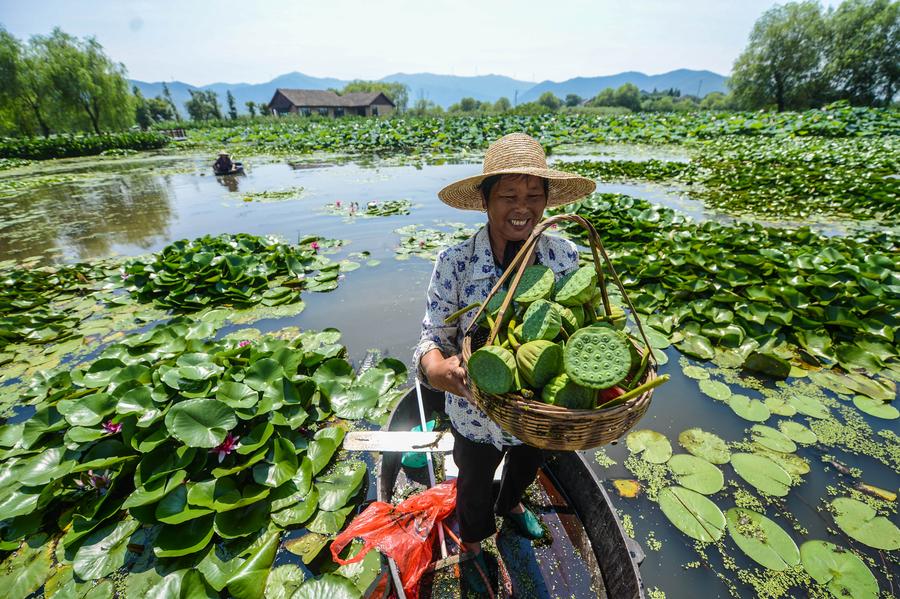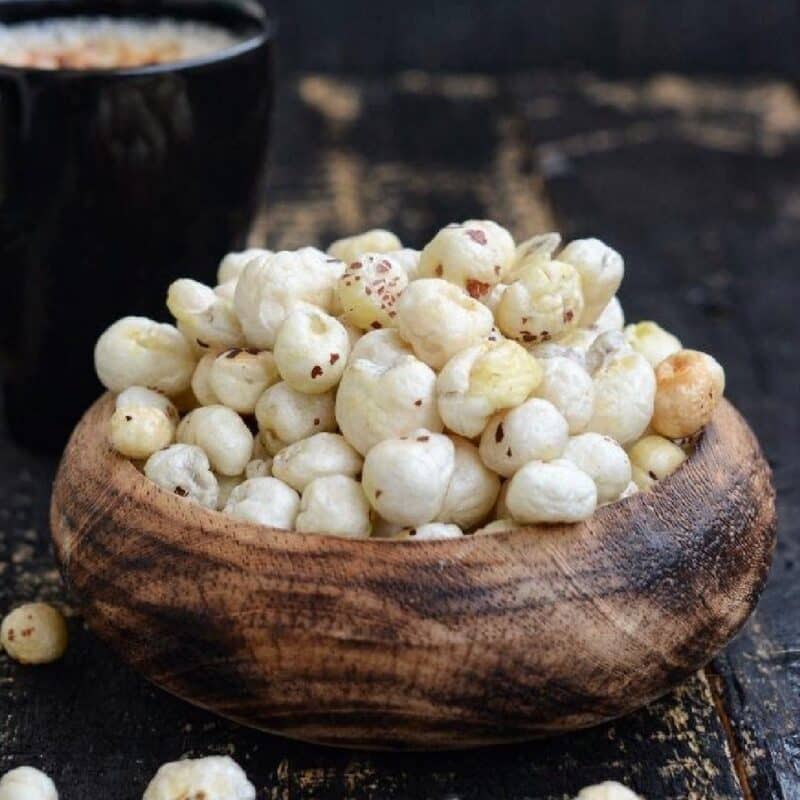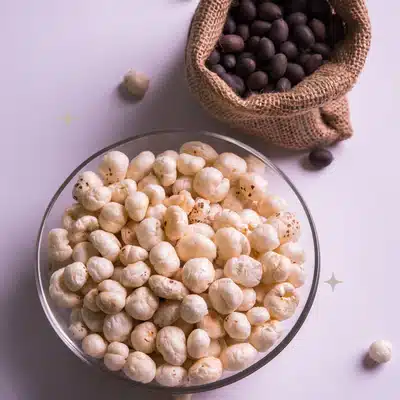Blog
Which country produces most makhana?

The Rise of Makhana
Makhana has shifted position from a regular snack to a superfood that people all over the world consume. Makhana originates from India where it has been utilized in religious ceremonies as well as during times of medical emergencies for centuries. Since then, it has been gaining quite a reputation among the fanatics of world health.
Makhana is loaded with protein, fiber, and vitamins, which are all beneficial for your body. It can assist absorption, raise metabolism, and defend your heart. Besides its wide use in cooking, from the spicy to the sweet, it has helped to popularize it a lot too.
India is where Makhana production starts and ends.
As the largest in the world market, India undoubtedly is the champion at the production and growing of makhana. Hence, the Indian states of Bihar, Uttar Pradesh, and West Bengal being blessed with good climate and fertile soil make them ideal places to grow makhan.
How to Grow Things:
In India, makhana is mostly grown in lowland places with still amounts of water, like lakes and ponds, where lotus flowers do well. During the wet season, farmers put lotus seeds in these bodies of water. The seeds sprout and grow into full-grown lotus plants. Once the lotus flowers open and the seeds are fully grown, they are collected, which is called makhana.
Importance for the economy:
Thousands of farmers and workers are employed by the makhana business, which is an important part of the economies of the places where it is grown. With rising demand both in India and around the world, growing makhana has become a profitable business for farmers, helping to improve rural incomes and the overall health of agriculture.
Trends in the Market:
India is a major player in the world market because it produces the most makhana. Makhana is exported from the country to many other countries, such as the US, Canada, the UK, and Australia, to meet the needs and wants of people all over the world. Makhana is becoming more popular as a healthy snack, which has led to more exports and more growth in India’s economy.
China is a rising star in the production of Makhana
China has become a strong player in the makhana business, and its methods for growing and making the crop are now on par with India’s. Because the country has so many farming resources and experts, it has been able to increase makhana production to meet local demand and grow its market share in foreign markets.
How to Grow Things:
Like in India, makhana is grown in China in places where water is a good environment for lotus plants. Makhana farming is very popular in provinces like Jiangsu, Zhejiang, and Anhui, which take advantage of their lots of water and good weather.
Importance for the economy:
Cultivating makhana has become an important part of China’s agriculture, helping to improve rural areas and make money. The Chinese government has made rules to help makhana farmers and encourage the industry’s growth because they know it can help the economy grow and reduce poverty in rural areas.
Trends in the Market:
In the past few years, China’s makhana exports have steadily grown as the country has used its production skills to meet demand both at home and abroad. Chinese makhana goods are sold in many countries in Asia, Europe, and North America, and people who are health-conscious and looking for healthy snack choices really like them.
Other Important People in Makhana Production
India and China make up most of the world makhana market, but many other countries also sell and make makhana. Some of these are:
1. Japan:
Japan has a long history of growing makhana, mostly for its own people to eat. The country’s careful growing methods and dedication to quality have made its makhana goods famous for being the best in both local and foreign markets.
2. Thailand:
Thailand’s weather is good for growing makhana, especially in the northern parts of the country. Thai makhana goods are popular with people who want high-quality snacks with a foreign twist because of their unique tastes and textures.
3. Russian Federation
In recent years, there has been a huge increase in makhana farming in Russia. This is because more and more Russians want healthy snacks. Russian makhana goods are liked by a wide range of people, from health nuts to people who love fine food.
Challenges and chances in Makhana production
Although the makhana business has a lot of potential, it faces a number of problems that could slow its growth. Some of these are:
- Changes in the climate:
Extreme weather and changes in the climate are big problems for makhana farming because they lower food amounts and quality. To lessen the effects of climate change on makhana production, farmers need to switch to growing methods that are more resistant to changes in the weather and put money into watering systems.
- Competition in the Market:
As the demand for makhana continues to rise around the world, competition between countries that grow it gets tougher. Makhana-producing countries need to keep coming up with new products, making sure they are of high quality, and expanding their markets to meet changing customer tastes in order to stay ahead of the competition.
- Long-Term Care:
Sustainable makhana farming methods are needed to protect marine environments and make sure the business will be around for a long time. To protect the environment for future generations, farmers need to use less chemicals, adopt growing methods that are good for the environment, and support wildlife protection.
Conclusion
Makhana has become a big name in the health food market thanks to its high nutritional value, wide range of uses in cooking, and popularity around the world. India is still the biggest producer of makhana, but China, Japan, Thailand, and Russia are also doing a great job of growing it and exporting it. The makhana business has a huge amount of room to grow and improve because more and more people want healthy snack choices. Tanzanian makhana-producing countries can take advantage of this good chance to make a lot of money and solidify their place as leaders in the global makhana market by dealing with problems, using environmentally friendly methods, and entering new markets.
Here are 10 frequently asked questions about which country produces the most makhana:
1. Q: Which country produces the most makhana?
-
- A: India is the largest producer of makhana.
- Q: How is makhana cultivated in India?
- A: Makhana is cultivated in India through a manual process of collecting and separating the seeds from the lotus plants that grow in ponds or wetlands.
- Q: What are the ideal growing conditions for makhana production?
- A: Makhana requires warm and humid climates, with a temperature range of 25-35 degrees Celsius. It thrives in marshy areas or stagnant water bodies.
- Q: Are there any specific regions or states in India known for makhana production?
- A: Yes, Bihar in India is known for being a major producer of makhana. Other regions like Uttar Pradesh, West Bengal, and Jharkhand also contribute to its production.
- Q: How long does it take for makhana plants to grow and be harvested?
- A: The growth period of makhana plants varies from 90 to 120 days. Once the plants reach maturity, the seeds are harvested by hand.
- Q: What are the nutritional benefits of makhana?
- A: Makhana is rich in proteins, carbohydrates, and dietary fiber. It is low in calories, fat, and sodium, making it a healthy snack option.
- Q: Is makhana gluten-free?
- A: Yes, makhana is naturally gluten-free, which makes it suitable for individuals with gluten intolerance or celiac disease.
- Q: How is makhana used in cooking?
- A: Makhana is often roasted or fried and used as an ingredient in various Indian dishes. It can be used in curries, desserts, snacks, or even as a topping on salads.
- Q: Can makhana be stored for a long time?
- A: Yes, makhana has a long shelf life if stored properly in an airtight container in a cool and dry place. This helps to retain its freshness and crispness.
- Q: Is makhana popular outside of India as well?
- A: Yes, makhana has gained popularity internationally as a healthy and versatile food. It is now available in many countries and is used in various cuisines.
Please note that the information provided is based on general knowledge and may vary depending on specific sources or recent updates. Always refer to reliable sources and guidelines for the most accurate and up-to-date information.





We are exporters of Makhana. Our Quality is the Best on the Earth. Our Prices are the Most Genuine and Terms are Accessible.